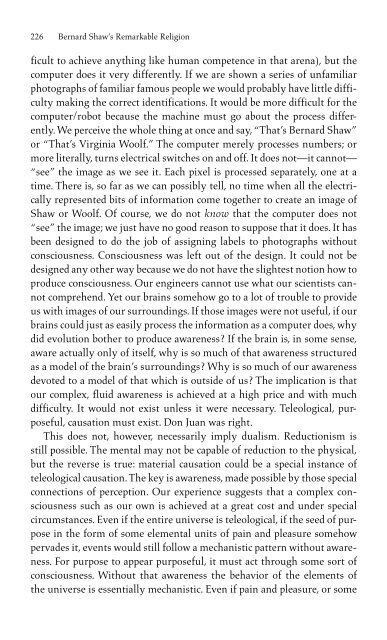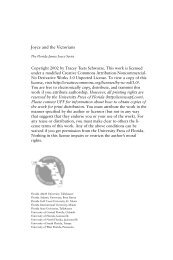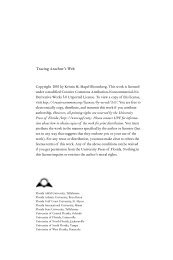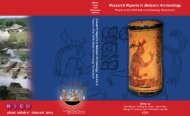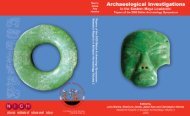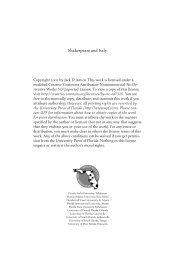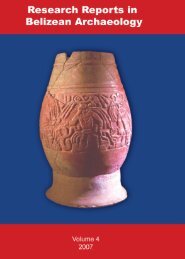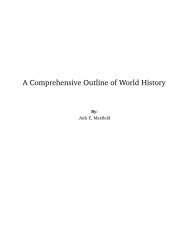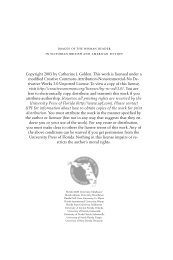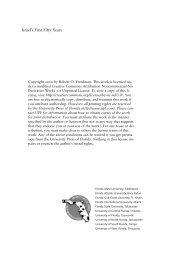Bernard Shaw's Remarkable Religion: A Faith That Fits the Facts
Bernard Shaw's Remarkable Religion: A Faith That Fits the Facts
Bernard Shaw's Remarkable Religion: A Faith That Fits the Facts
Create successful ePaper yourself
Turn your PDF publications into a flip-book with our unique Google optimized e-Paper software.
226 <strong>Bernard</strong> Shaw’s <strong>Remarkable</strong> <strong>Religion</strong><br />
ficult to achieve anything like human competence in that arena), but <strong>the</strong><br />
computer does it very differently. If we are shown a series of unfamiliar<br />
photographs of familiar famous people we would probably have little difficulty<br />
making <strong>the</strong> correct identifications. It would be more difficult for <strong>the</strong><br />
computer/robot because <strong>the</strong> machine must go about <strong>the</strong> process differently.<br />
We perceive <strong>the</strong> whole thing at once and say, “<strong>That</strong>’s <strong>Bernard</strong> Shaw”<br />
or “<strong>That</strong>’s Virginia Woolf.” The computer merely processes numbers; or<br />
more literally, turns electrical switches on and off. It does not—it cannot—<br />
“see” <strong>the</strong> image as we see it. Each pixel is processed separately, one at a<br />
time. There is, so far as we can possibly tell, no time when all <strong>the</strong> electrically<br />
represented bits of information come toge<strong>the</strong>r to create an image of<br />
Shaw or Woolf. Of course, we do not know that <strong>the</strong> computer does not<br />
“see” <strong>the</strong> image; we just have no good reason to suppose that it does. It has<br />
been designed to do <strong>the</strong> job of assigning labels to photographs without<br />
consciousness. Consciousness was left out of <strong>the</strong> design. It could not be<br />
designed any o<strong>the</strong>r way because we do not have <strong>the</strong> slightest notion how to<br />
produce consciousness. Our engineers cannot use what our scientists cannot<br />
comprehend. Yet our brains somehow go to a lot of trouble to provide<br />
us with images of our surroundings. If those images were not useful, if our<br />
brains could just as easily process <strong>the</strong> information as a computer does, why<br />
did evolution bo<strong>the</strong>r to produce awareness? If <strong>the</strong> brain is, in some sense,<br />
aware actually only of itself, why is so much of that awareness structured<br />
as a model of <strong>the</strong> brain’s surroundings? Why is so much of our awareness<br />
devoted to a model of that which is outside of us? The implication is that<br />
our complex, fluid awareness is achieved at a high price and with much<br />
difficulty. It would not exist unless it were necessary. Teleological, purposeful,<br />
causation must exist. Don Juan was right.<br />
This does not, however, necessarily imply dualism. Reductionism is<br />
still possible. The mental may not be capable of reduction to <strong>the</strong> physical,<br />
but <strong>the</strong> reverse is true: material causation could be a special instance of<br />
teleological causation. The key is awareness, made possible by those special<br />
connections of perception. Our experience suggests that a complex consciousness<br />
such as our own is achieved at a great cost and under special<br />
circumstances. Even if <strong>the</strong> entire universe is teleological, if <strong>the</strong> seed of purpose<br />
in <strong>the</strong> form of some elemental units of pain and pleasure somehow<br />
pervades it, events would still follow a mechanistic pattern without awareness.<br />
For purpose to appear purposeful, it must act through some sort of<br />
consciousness. Without that awareness <strong>the</strong> behavior of <strong>the</strong> elements of<br />
<strong>the</strong> universe is essentially mechanistic. Even if pain and pleasure, or some


